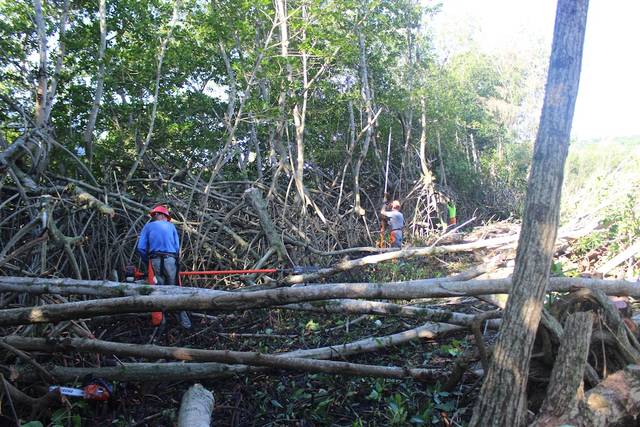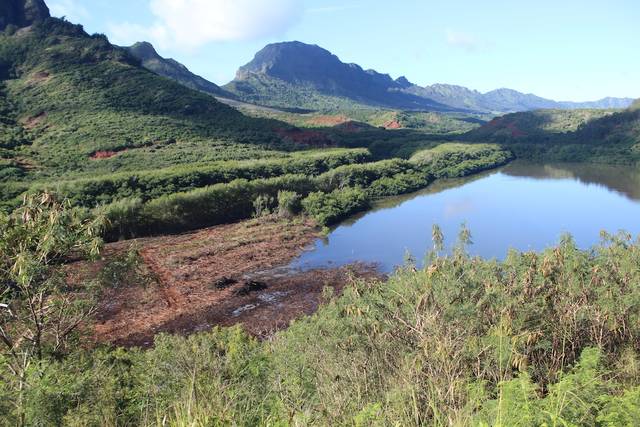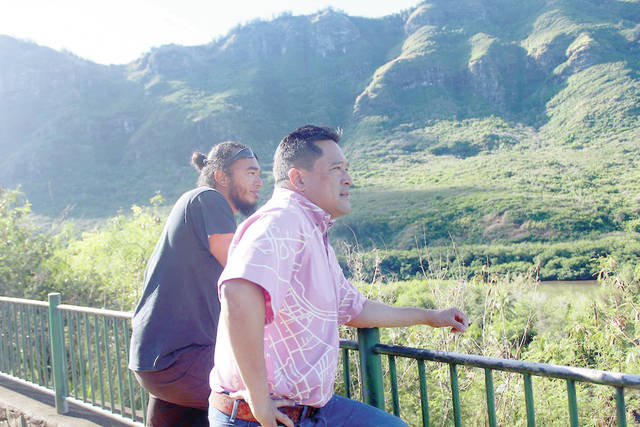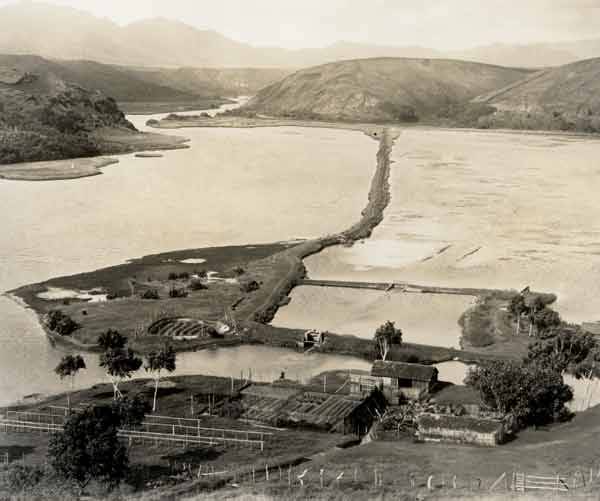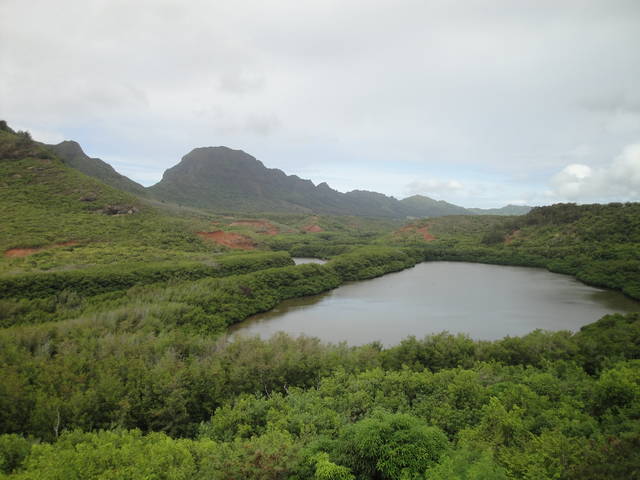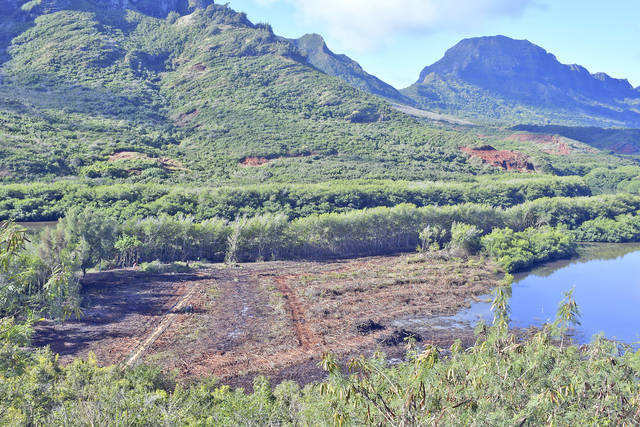LIHUE — Makaloa is now growing in a wetland behind the pavilion at Niumalu Beach Park, a slender reed that’s traditionally been used for basket- and mat-weaving.
It’s one of several native plants and fish species that have started to take root in the area — a place that was a sandy beach in the early 1900s before red mangrove took hold.
“Just last week we had our first ‘alae ‘ula (Hawaiian moorhen),” said Peleke Flores, field operations manager for Malama Hule‘ia, the nonprofit that’s taking charge of removing red mangrove from the Hule‘ia River.
A boardwalk runs through the site for better access and management, and Flores regularly hosts groups of grade-school children for field trips. But the site is first and foremost a demonstration site for mangrove removal and native plant restoration.
Mangrove is now gone from that site, thanks to a project that was funded by grants from the National Oceanic and Atmospheric Administration and Hawaii Community Foundation.
It’s one of three phases for the demonstration site, which is necessary for continuing Malama Hule‘ia’s project — removing about 90 acres worth of red mangrove from the entire Hule‘ia River valley and estuary.
The end goal is to revitalize the entirety of ‘Ainakumuwai ahupua‘a, or watershed, including the culturally significant Alekoko Fishpond, also known as the Menehune Fishpond.
“It’s for the community,” said Mason Chock, councilmember and president of the Malama Hule‘ia board of directors. “It will provide jobs and sustenance.”
Ancient Hawaiians used fishponds for an accessible food supply, and as they’ve been researching and clearing invasive mangrove from the place, those involved in the project have realized at one time there were at least 14 fishponds surrounding the Alekoko Fishpond, on both sides for the river.
And now that Malama Hule‘ia has gotten a good portion of their demonstration site cleared and replanted with native species, they’re taking on the mangrove surrounding Alekoko Fishpond with community work days and volunteers.
Chainsaws and pickers, heavy equipment and other tools were in full swing in the hands of volunteers on Thursday, who were mulching some of the mangrove and stacking other pieces for use in hale construction or to be retrieved by Green Energy Team for the biofuel energy plant.
Over the past month, volunteers have cleared more than six acres of mangrove, and are preparing the land for planting native species and continuing to clear mangrove.
It’s a big project, but with many hands and dedication, the ahupua‘a and the life-giving fishponds will be restored.
Anyone who wants to volunteer can jump on board any time. Just contact the people at Malama Hule‘ia. Community work days are held on the fourth Saturday of every month, and one is happening this Saturday.
Those interested in joining should email info@malamahuleia.org or visit the organization’s Facebook page to get more information.
